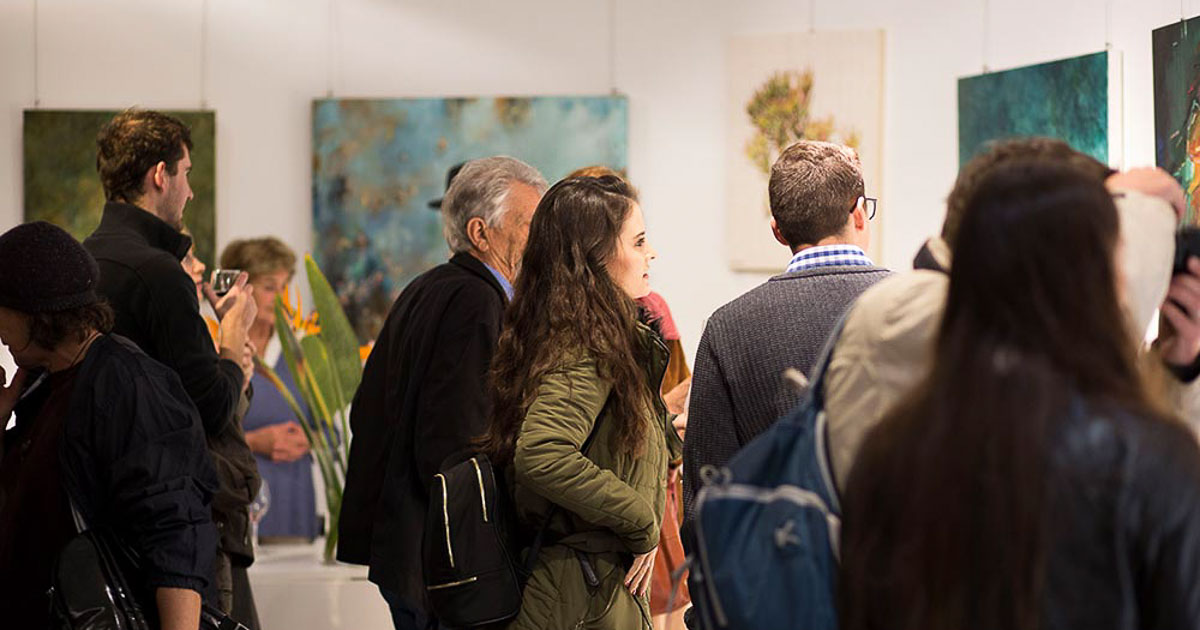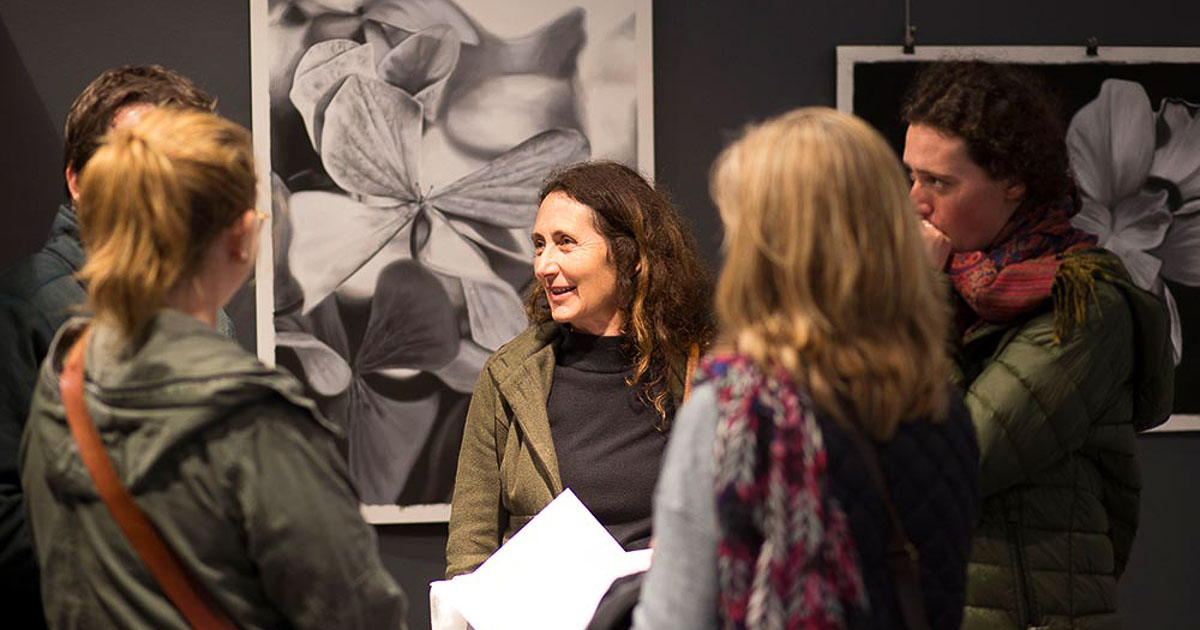In the following article Jayson Coomer of Rolling Alpha gives some insight into how and why investors decide whether an artwork is worth the asking price.
Whenever I talk to people about visiting an art fair, someone inevitably says “I can’t believe people would pay that.” So I’m going to try to explain where these fantastic prices come from.
“At an Art Fair, the prices are unbelievable. How are they decided?”
Well, the traditional answer will be “demand and supply”.
That is: there’s a general demand for art from collectors; there is a limited supply of artworks; and the interaction between them sets the price.
But this is not a good answer, because it treats “art” as a general asset class. The problem:
• Yes, there is a general demand for art (as in: there are collectors, and they like to collect); but
• The supply of art is quite specific. As in: you can only buy specific works of art produced by specific artists – not ‘art in general’.
• And because the item being purchased is not a general good, we’re actually talking about individual markets for each artwork. And these all combine together to form the general art market.
Or you might say:
• There is a general market for art;
• Which is sub-divided into separate smaller markets for each artist;
• Which are, in turn, made up of individual markets for each artwork.
Now that might sound complicated.
But investors deal with this level of complexity by adopting conventions (or ‘rules of thumb’). So there is a kind of tiered approach to assessing the value of an artwork:
1. First, you ask “Is the artist worth investing in?” If the answer is no, you move on.
2. If the answer is yes, you can then ask “Is this particular work a good or important example of the artist’s work?” If the answer is no, you move on.
3. If the answer is yes, you can finally ask “Is the price reasonable relative to the potential value?” If the answer is no, you exclaim in horror. If the answer is yes, you lament the opportunity that is passing you by.

But how to answer those questions though…
How an investor looks at an artist:
Basically, the starting point in an investment decision is: “Do other people find this artist interesting enough to own?”
And to answer that, there are a number of indicators that an investor will look at:
1. Museum collections. If the Tate or MoMA have examples of the artist’s work in their storerooms, that’s a good sign. Art is a positional good, so it’s associated with status. And nothing says “interesting enough #status” like owning an artwork by a museum-grade artist.
2. Major exhibitions. If an artist has had a major exhibition at an art museum, then that’s also good news. Again, art is a positional good. And having a high-visibility artist on the wall is what many investors want.
3. Gallery representation. If the artist is represented by a major gallery, that’s worth something. Major galleries have ultra-high-net-worth individuals on their client lists – and if they’re selling the artist to them, then some of those artworks will end up being donated to museum collections down the line.
4. Auction history. If an artist has had some high profile action at auction, it means that there’s a market for their work.
5. Publications. Artists that have had their work included in academic publications are also promising. It means that all those art students, the ones that will eventually work in galleries, auction houses and art consultancies, find the artist interesting.
6. Artist age. An artist that has been releasing new art into the market for years will normally have built up an investor base. After all, how have they survived for this long? New artists, by comparison, are more risky.
And all those factors have their own ‘sub-factors’ as well. For example, an artist that has exhibited at the Tate Modern is more visible (and therefore, more valuable) than an artist that has exhibited at a local museum. An artist that has been included in a group exhibition is less prominent than an artist that has had a solo retrospective. But in general, those six indicators above are the big ticket items on any investing checklist (according to the art investing books that I’ve read).
And that checklist will set a pricing range for an artist’s work.
• Top international artists will sell their major works for millions of dollars.
• Prominent international artists and top local artists will sell for hundreds of thousands of dollars.
• Up and coming international artists, and prominent local artists, will sell for tens of thousands of dollars.
• Up and coming local artists will sell for thousands of dollars.
• New local artists will sell for hundreds of dollars, if they sell at all.
I’m being very general here – there will be individual fluctuations within that. But basically, the more prominent the artist, the more rich people there are that want to buy their major works. And that drives prices up.
Then, how an investor will look at a work:
If the investor has decided that the artist is worthwhile, then they can start looking at the works themselves. First, they might look at the medium. Here is my version of the value hierarchy:
• Installations – the most expensive “major” and/or “important” works (although these are not all that commercial – you’d have to be a museum or a large corporate with a massive entrance hall to own one of these).
• Paintings (oil, acrylic, etc), sculpture and mixed media – these are the more expensive once-off pieces (also more likely to be “major” or “important”);
• Watercolour paintings – these tend to be easier to produce, so they’re normally less valuable;
• Drawings – once-offs are still worthwhile, even if they’re more like sketches;
• Editions and multiples (etchings, photographs, lithographs) – and the higher the edition count, the less valuable the work.
And the pricing will reflect this hierarchy. So, as an example, you might find that an artist’s oil paintings (or ‘major’ works) will sell for $100,000. Their sketches will sell for a lot less (between 20% and 30% of the price of an oil painting , I’d say). And their editions and multiples will appear ‘really cheap’ relative to everything else.
The second thing an investor will look at is how the work fits into the artist’s body of work. If the work fits it, it’s a safe buy. If the work is unusual, it’s in dicier territory. Because if it heralds a new direction for the artist, then the work might be a bargain; but if it was an experiment that no one really liked, then it may be the opposite.

Finally (and I do mean that), after all that objective evaluating is done, an investor might consider whether or not they like the work.
Because personal taste is the least important of the art investing questions.
The even shorter version of all that:
I guess it’s worth pointing out that many investors/collectors will not ask all these questions every time they want to buy some art.
Instead, they build relationships with certain genres of art (or even certain artists). They’ll keep tabs on what their preferred artists are doing, what their works are selling for at auction, and what exhibitions they have coming up. Which turns the whole investing game into one of personal time investment as well.
Which can make for even higher prices. Just saying.
For more, you should check out Don Thompson’s “The $12 million stuffed shark: the curious economics of contemporary art“. It’s a great book.
The post How Art Gets Its Value appeared first on Rolling Alpha on the 8th September 2017.

